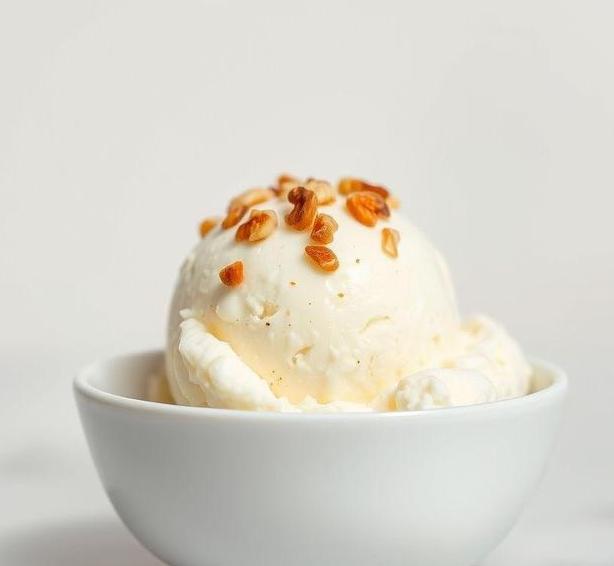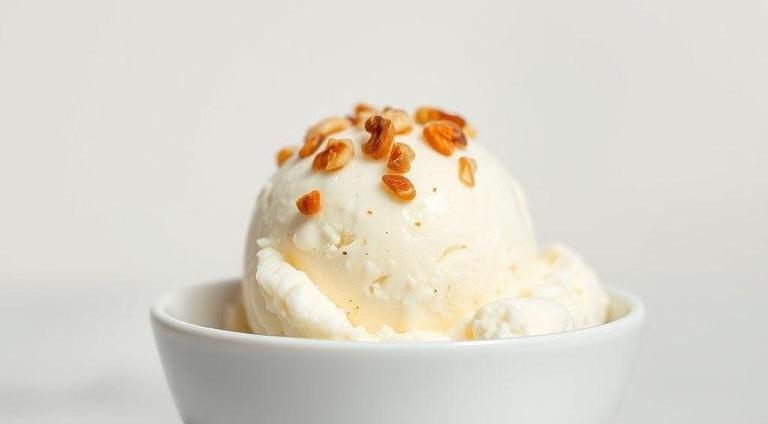Can Coconut Milk Ice Cream Go Bad : What You MUST Know
Coconut milk ice cream has become a popular alternative to traditional dairy-based ice cream, especially for people following vegan, lactose-free, or plant-based diets. It’s creamy, delicious, and often packed with tropical flavors. But like any frozen dessert, it’s important to know how to properly store it and recognize signs that it might have gone bad. In this detailed guide, we’ll dive deep into everything you need to know about coconut milk ice cream – from its shelf life and spoilage signs to tips on how to keep it fresh and tasty.
Can Coconut Milk Ice Cream Go Bad?
Absolutely. While coconut milk ice cream is made with plant-based ingredients, it doesn’t last forever, even if it’s stored in the freezer. Like any other frozen dessert, it can eventually deteriorate in quality, lose its texture, or even develop an off taste. The presence of coconut milk (which contains fats and oils) and the added ingredients in the ice cream can still be subject to changes over time due to temperature fluctuations, improper storage, or contamination.
Coconut milk ice cream can go bad in a few different ways:
- Texture Changes: The consistency might become grainy or icy, especially if it’s been partially thawed and refrozen.
- Off Flavors: A sour or rancid taste can develop, especially if the fats in the coconut milk start to break down.
- Color Changes: It could appear a little darker or less vibrant, indicating that it’s no longer as fresh.
- Freezer Burn: This happens when the ice cream has been exposed to air in the freezer, causing ice crystals to form on the surface and giving it a dry texture.
Shelf Life For Coconut Milk Ice Cream

The shelf life of coconut milk ice cream depends on a number of factors, including the brand, ingredients, and how it’s stored. On average, coconut milk ice cream can last:
- Unopened: If you’ve just bought the coconut milk ice cream and it’s still sealed, it can last anywhere from 6 to 12 months in the freezer. This assumes it’s stored in a steady, low-temperature environment.
- Opened: Once opened, the shelf life shortens slightly. You can expect your coconut milk ice cream to remain in optimal condition for 2 to 4 weeks, but it can last longer (up to 2 months) if stored properly and continuously frozen.
Even though it’s safe to consume beyond this timeframe, the quality, flavor, and texture may not be at their best.
Key Factors That Affect Shelf Life
- Ingredients: Ice cream with preservatives will likely last longer. Those without preservatives or with natural ingredients may spoil faster.
- Temperature: Frequent thawing and refreezing can cause the ice cream to degrade quicker.
- Packaging: Sealed containers that are airtight will prolong the shelf life.
Common Signs Of Spoilage
Knowing when your coconut milk ice cream has gone bad can sometimes be tricky. The frozen state masks many signs of spoilage, but here are a few clear indicators:
- Changes in Texture: The ice cream might become icy or slushy if it has been exposed to temperature fluctuations. If you find the ice cream is full of large ice crystals instead of its usual creamy texture, it’s a sign that it has been thawed and refrozen, which degrades the quality.
- Off or Sour Taste: If it has developed a sour or rancid taste, it’s no longer good to eat. This is often due to the oils in the coconut milk breaking down over time.
- Color Fading or Darkening: When coconut milk ice cream begins to go bad, it can lose its vibrant white or creamy color. If it starts to turn a yellowish or brown hue, that’s a clear sign that something’s off.
- Freezer Burn: This is a telltale sign your ice cream has been in the freezer for too long. You might notice patches of ice on the surface or a dry, crumbly texture when you scoop it. The taste might also become stale or cardboard-like.
- Unpleasant Smell: If the ice cream emits a sour or rancid smell when you open the container, that’s a major red flag that it’s no longer safe to eat.
How To Store Coconut Milk Ice Cream?

Proper storage is key to ensuring your coconut milk ice cream stays fresh for as long as possible. Follow these tips to extend its shelf life and keep it in the best condition:
Keep It Consistently Frozen
- Freezer temperature: Make sure the freezer is at or below 0°F (-18°C). A higher temperature can cause your ice cream to thaw and refreeze, which will ruin the texture.
- Avoid opening the freezer often: Opening the freezer too frequently lets warm air in, which can lead to ice crystals forming and freezer burn.
Seal It Properly
- Tightly close the lid: Ensure the container is properly sealed to avoid exposure to air. If the ice cream is stored in a tub with a loose lid, transfer it to an airtight container.
- Use wax paper or plastic wrap: For extra protection, cover the surface of the ice cream with a piece of wax paper or plastic wrap before sealing the container. This prevents air from touching the ice cream.
Avoid Frequent Thawing
- Only thaw what you’ll eat: If you know you won’t finish the whole tub in one sitting, scoop out only the amount you need and return the rest to the freezer immediately. Repeated thawing and refreezing can impact texture and flavor.
Store In A Stable Spot
- Don’t store it in the door: The door of the freezer is subject to temperature fluctuations because it opens and closes often. Store your ice cream on the shelves of the freezer where the temperature remains more stable.
Use A Separate Container For Leftovers
- If you have leftover coconut milk ice cream in a larger container and don’t want to expose the entire tub to air, transfer the remaining ice cream to a smaller, airtight container. This helps prevent freezer burn.
Expert Tips
If you want to make the most out of your coconut milk ice cream, here are a few expert tips:
- Use a sturdy ice cream scoop: If your coconut milk ice cream is a bit hard, you can dip the scoop in warm water to help it glide more smoothly through the ice cream. This is especially helpful if it’s been stored for a long time and has become too solid.
- Let it sit before serving: If the texture seems too hard straight out of the freezer, let the ice cream sit at room temperature for 5 to 10 minutes before scooping. This softens it slightly, making it easier to serve.
- Know when to throw it out: If you’re unsure whether your ice cream has gone bad, a good rule of thumb is that it’s always better to err on the side of caution. If the ice cream tastes, smells, or feels off, it’s best to discard it.
- Make your own: If you love coconut milk ice cream, consider making it at home. This way, you can control the ingredients and avoid added preservatives. Plus, you can experiment with unique flavors and toppings!
FAQs
How Long Does Coconut Milk Ice Cream Last In The Freezer?
Coconut milk ice cream can last in the freezer for about 6 to 12 months if stored properly. Freezing helps preserve its quality, but it’s best to consume it within 6 months for the best taste and texture.
What Are Signs That Coconut Milk Ice Cream Has Gone Bad?
Signs that coconut milk ice cream has gone bad include a noticeable change in texture (e.g., becoming icy or overly hard), an off or sour smell, or visible signs of freezer burn, such as discoloration or ice crystals forming inside the container.
Can Coconut Milk Ice Cream Spoil If Left Out At Room Temperature?
Yes, coconut milk ice cream can spoil if left out at room temperature for too long. After 2 hours, the ice cream may start to melt and bacteria could begin to grow, making it unsafe to eat.
How Can I Tell If Coconut Milk Ice Cream Has Freezer Burn?
Freezer burn occurs when air comes into contact with the ice cream. It manifests as dry, hard patches or ice crystals on the surface. While it won’t make the ice cream unsafe to eat, it can affect the texture and flavor.
Can Coconut Milk Ice Cream Go Bad Even If It’s Stored In The Freezer?
Yes, even if stored in the freezer, coconut milk ice cream can go bad over time. The texture and flavor can degrade due to improper sealing, contamination, or extended storage. The best way to prevent spoilage is to keep it tightly sealed in an airtight container.
Is It Safe To Eat Coconut Milk Ice Cream Past Its Expiration Date?
Coconut milk ice cream can still be safe to eat past its expiration date if it has been stored properly and shows no signs of spoilage, like off smells, unusual texture, or freezer burn. However, its taste and texture may not be optimal.
Can Coconut Milk Ice Cream Cause Food Poisoning If It Goes Bad?
If coconut milk ice cream has gone bad due to contamination, improper storage, or prolonged exposure to high temperatures, it can potentially cause food poisoning. Symptoms could include stomach cramps, nausea, or diarrhea. Always discard any ice cream that appears spoiled.
How Should I Store Coconut Milk Ice Cream To Prevent It From Going Bad?
To prevent coconut milk ice cream from going bad, store it in an airtight container, ideally with a tight-fitting lid, and keep it in the coldest part of the freezer. Avoid frequent temperature fluctuations by minimizing the time the container is left open.
What Happens If I Eat Coconut Milk Ice Cream That Has Gone Bad?
Eating coconut milk ice cream that has gone bad can result in digestive issues like nausea or diarrhea, especially if the ice cream has been contaminated or has developed harmful bacteria. It’s important to inspect the ice cream before consuming it.
Can Homemade Coconut Milk Ice Cream Go Bad?
Yes, homemade coconut milk ice cream can go bad. It may not last as long as store-bought versions because it lacks preservatives. It should be consumed within a few weeks, and it must be stored in the freezer in an airtight container to prevent contamination.
